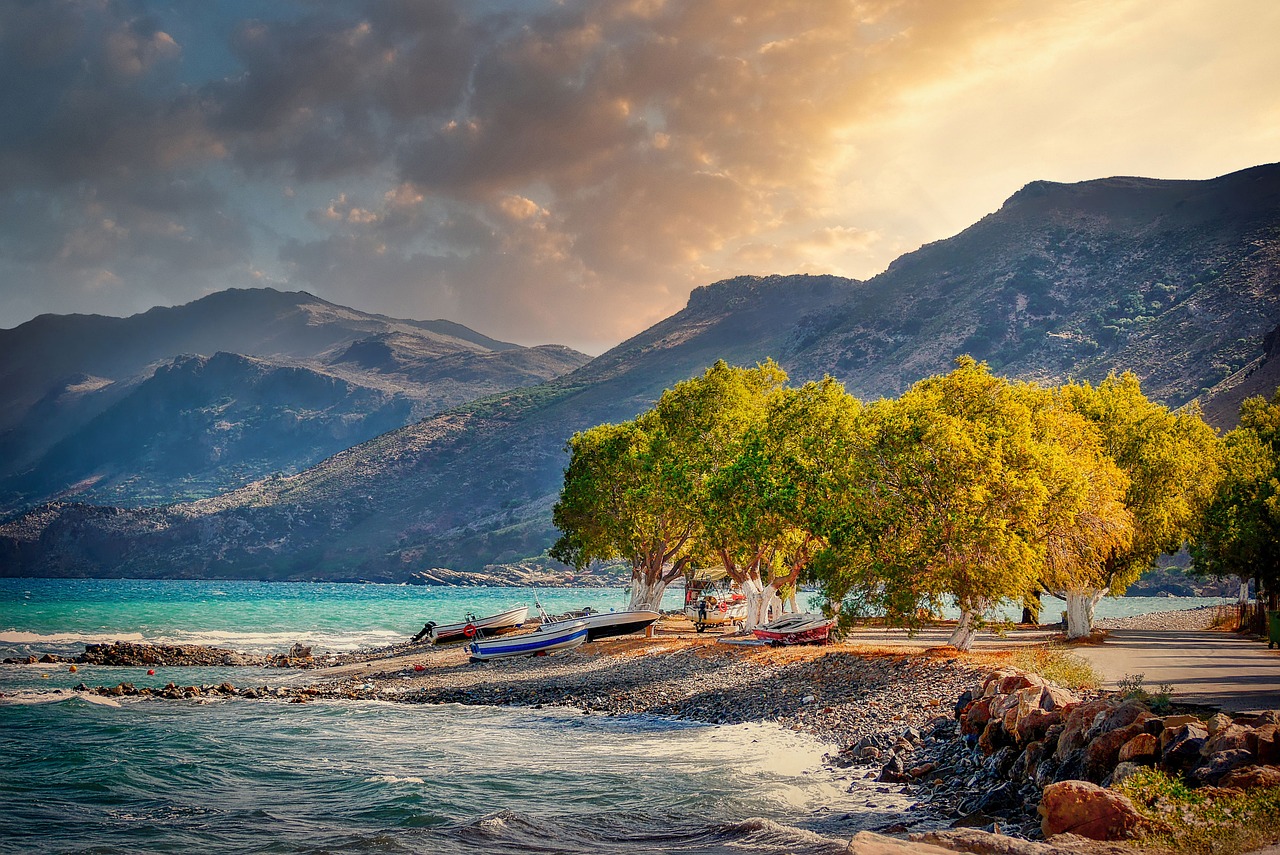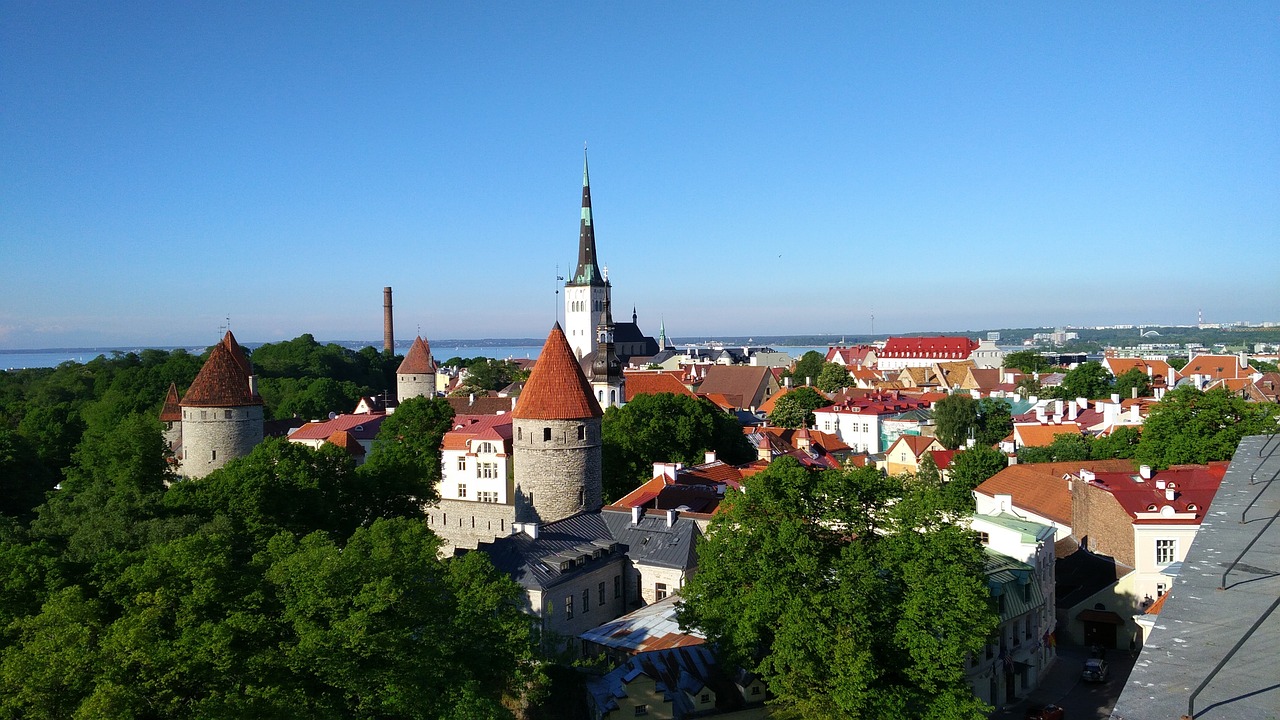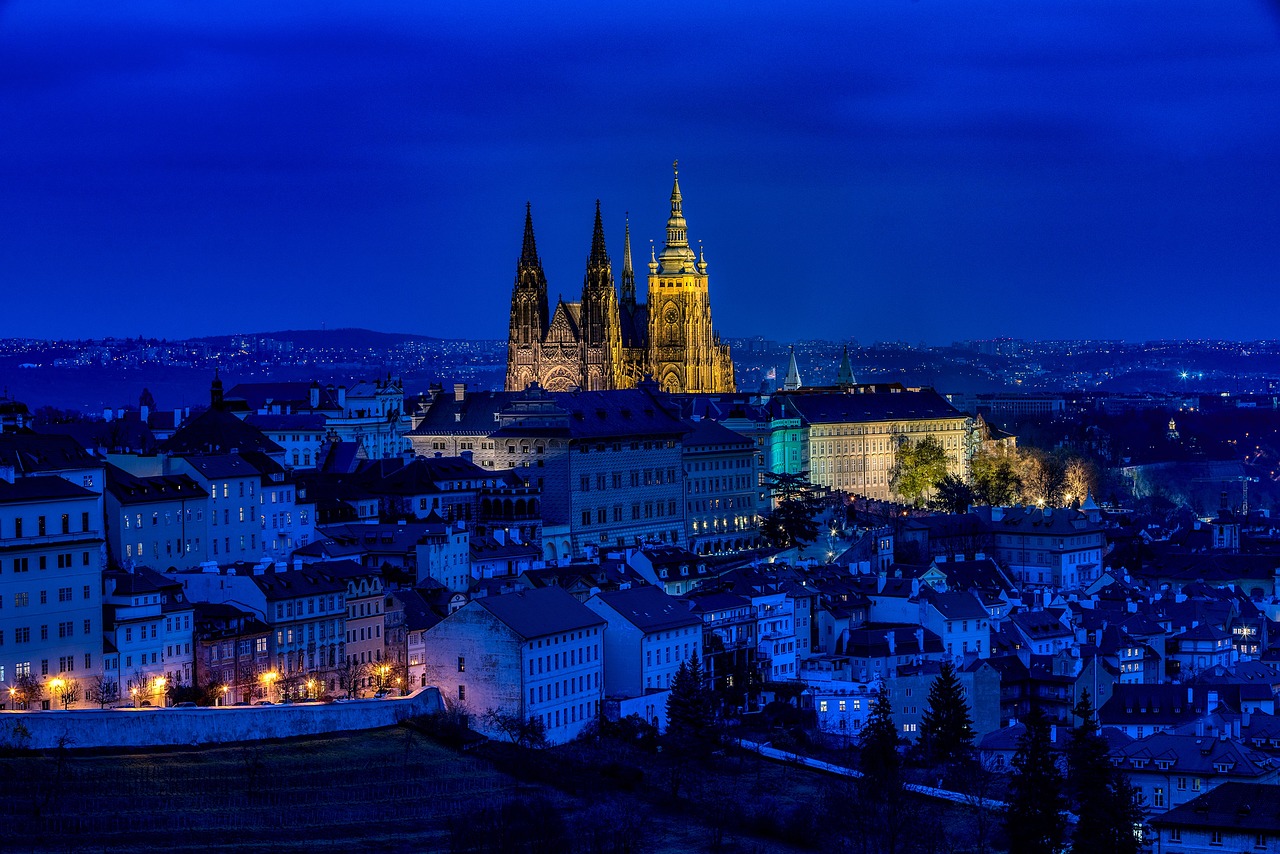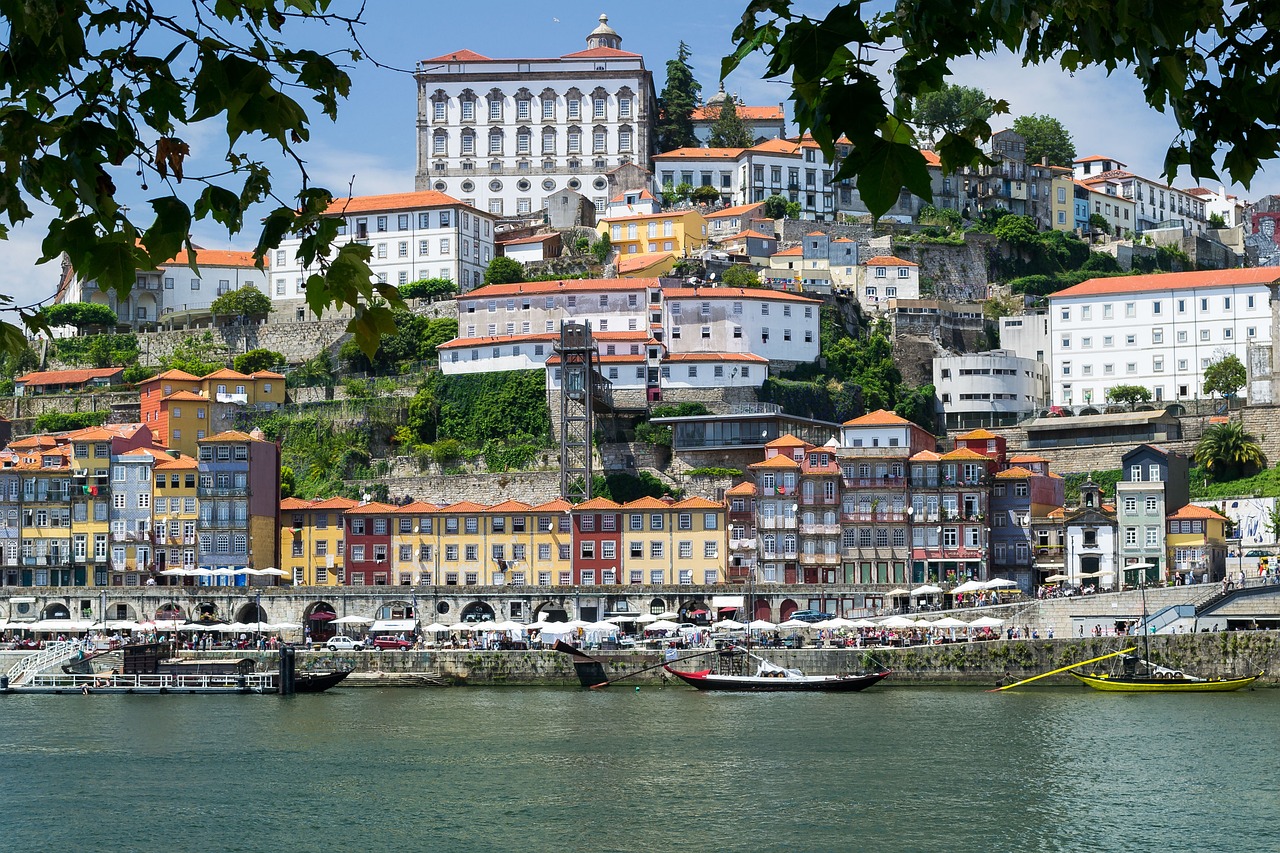Crete is the largest and most populous island in Greece, located in the eastern Mediterranean Sea. It is the southernmost point of Europe and the fifth largest island in the Mediterranean, after Sicily, Sardinia, Cyprus and Corsica. Crete is known for its beautiful beaches, stunning mountain ranges, and rich cultural heritage, with ancient ruins and archaeological sites scattered throughout the island. The island is also famous for its cuisine, which features fresh seafood, olive oil, and locally grown produce.
Short History
Crete has a long and complex history, with evidence of human habitation dating back to the Neolithic era. The island was ruled by various ancient civilizations, including the Minoans, who built impressive palaces and developed a sophisticated culture, as well as the Mycenaeans, Greeks, Romans, Byzantines, Venetians, and Ottomans.
During World War II, Crete played a key role in the battle for control of the Mediterranean, with Allied forces and German troops engaging in a fierce conflict on the island. In 1941, German forces launched a massive airborne invasion of Crete, which ultimately led to their victory but at a high cost in terms of both sides’ casualties.
Today, Crete is a part of Greece and is known for its stunning natural beauty, unique culture, and rich history, which can be explored through its many archaeological sites, museums, and cultural events.
Architecture
The architecture of Crete is a reflection of its rich history and diverse cultural influences.
The island is home to several well-preserved ancient sites, such as the Palace of Knossos, which features impressive examples of Minoan architecture, including large courtyards, grand staircases, and intricate frescoes. The Venetian influence on Crete can be seen in the architecture of cities like Chania and Rethymno, which feature narrow streets, colorful buildings, and elegant Venetian mansions.
Crete is also known for its traditional architecture, which is characterized by stone buildings with thick walls, wooden balconies, and red-tiled roofs. These structures are often clustered together in small villages and towns, creating a charming and picturesque atmosphere.
In more modern times, Crete has seen a blend of architectural styles, with buildings ranging from sleek modern designs to traditional homes with modern updates. Overall, the architecture of Crete reflects the island’s long and diverse history, as well as its vibrant present-day culture.
Museums and Galleries
Crete is an island with a rich cultural heritage that spans thousands of years, and this is reflected in its numerous museums and galleries. From ancient Minoan artifacts to contemporary art exhibitions, there is something for everyone to enjoy.
Here are some of the most interesting museums and galleries to visit in Crete:
- Heraklion Archaeological Museum – The largest archaeological museum in Crete, featuring artifacts from the Minoan civilization and other ancient cultures.
- Museum of El Greco – Dedicated to the life and work of the famous painter, El Greco, who was born in Crete.
- Natural History Museum of Crete – Exhibits on the flora and fauna of Crete, as well as its geology and ecology.
- Historical Museum of Crete – Showcases the history of Crete from ancient times to the modern era.
- Nikos Kazantzakis Museum – Honors the life and work of the famous Cretan writer, Nikos Kazantzakis.
- Cretaquarium – A modern aquarium featuring a variety of marine life from the Mediterranean and other parts of the world.
- Museum of Typography – Dedicated to the history of printing and typography, with a focus on Cretan typography.
- Contemporary Art Museum of Crete – Exhibitions of contemporary art from Greek and international artists.
These museums and galleries provide a fascinating glimpse into the history, culture, and natural beauty of Crete, and are definitely worth a visit for anyone interested in exploring this unique island.
Landmarks and Monuments
Crete is an island rich in history and culture, with a wealth of landmarks and monuments to explore. From ancient ruins to impressive fortresses, there are many fascinating sights to discover on this beautiful island.
Here are some of the most interesting landmarks and monuments to visit in Crete:
- Palace of Knossos – An ancient Minoan palace, considered one of the most important archaeological sites in Crete.
- Venetian Harbor of Chania – A picturesque harbor lined with colorful Venetian buildings and historic fortifications.
- Arkadi Monastery – A historic monastery that played a key role in the Cretan resistance against Ottoman rule in the 19th century.
- Phaistos – An important Minoan archaeological site with well-preserved ruins of an ancient palace.
- Samaria Gorge – A stunning natural landmark and hiking trail that offers breathtaking views of the island’s rugged landscape.
- Fortezza Fortress – A Venetian fortress located in the city of Rethymno, with impressive views of the surrounding area.
- Ancient Aptera – A significant archaeological site featuring the ruins of an ancient city and a well-preserved Roman theater.
- Agios Nikolaos – A picturesque coastal town with a beautiful harbor and many historic buildings and landmarks.
These landmarks and monuments offer a fascinating glimpse into the rich history and natural beauty of Crete, and are definitely worth a visit for anyone exploring the island.
Parks and Green Spaces
Crete is an island with a stunning natural landscape, including many beautiful parks and green spaces to explore. From rugged mountain ranges to peaceful seaside parks, there are plenty of opportunities to connect with nature on this beautiful island.
Here are some of the most beautiful parks and green spaces worth visiting in Crete:
- Samaria National Park – A stunning national park that includes the famous Samaria Gorge, offering some of the most spectacular natural scenery on the island.
- Botanical Park & Gardens of Crete – A beautiful botanical garden with over 20 hectares of plants, trees, and flowers from around the world.
- Kourtaliotiko Gorge – A rugged gorge located in the mountains of southern Crete, with stunning views of the surrounding landscape.
- Vai Palm Forest – A unique palm forest located on the east coast of Crete, featuring over 5,000 palm trees and a beautiful beach.
- Preveli Beach & Palm Forest – A beautiful beach and palm forest located in the south of Crete, offering a peaceful and secluded retreat.
- Mount Ida – The highest mountain on Crete, with beautiful hiking trails and stunning views of the surrounding landscape.
- Lake Kournas – A beautiful freshwater lake located in the mountains of western Crete, surrounded by picturesque hills and olive groves.
- Gouves Municipal Park – A beautiful seaside park located in the town of Gouves, with a variety of walking paths, playgrounds, and picnic areas.
These parks and green spaces offer a wonderful opportunity to connect with the natural beauty of Crete, and are definitely worth a visit for anyone exploring this beautiful island.
Shopping Districts
Crete is a popular destination for shopping, with a variety of shopping districts and markets offering everything from traditional handicrafts to luxury fashion brands. Whether you’re looking for souvenirs, gifts, or high-end fashion, there are plenty of options to explore on this beautiful island.
Here are some of the most interesting shopping districts to visit in Crete:
- Agora Marketplace, Chania – A bustling market in the heart of Chania, featuring a variety of vendors selling everything from fresh produce to handmade crafts.
- Market Street, Heraklion – A popular shopping destination in the center of Heraklion, featuring a variety of shops, boutiques, and cafes.
- Elounda Village – A charming seaside village on the eastern coast of Crete, known for its luxury boutiques and high-end shops.
- Rethymno Old Town – A picturesque shopping district in the historic old town of Rethymno, featuring a variety of shops and boutiques selling local handicrafts and souvenirs.
- Hersonissos Market – A lively market in the popular tourist town of Hersonissos, featuring a variety of stalls selling souvenirs, clothing, and other goods.
- Agios Nikolaos Market – A charming market in the coastal town of Agios Nikolaos, featuring a variety of shops and vendors selling local crafts, jewelry, and clothing.
These shopping districts offer a unique opportunity to experience the local culture and find one-of-a-kind treasures, making them a must-visit for anyone exploring Crete.
Food and Drink
Crete is renowned for its delicious cuisine, which is characterized by fresh ingredients, bold flavors, and a focus on simple, wholesome dishes. Here are some of the most popular foods and drinks to try in Crete:
- Dakos – A traditional Cretan dish made with barley rusks, tomatoes, feta cheese, and olive oil.
- Graviera Cheese – A hard cheese made from sheep’s milk, often served with honey or fruit.
- Greek Salad – A classic salad made with tomatoes, cucumbers, onions, feta cheese, and olives, drizzled with olive oil.
- Souvlaki – Grilled meat skewers, usually made with pork, chicken, or lamb.
- Sfakian Pie – A savory pastry made with cheese, herbs, and sometimes meat, typically served with honey.
- Raki – A traditional Cretan spirit made from distilled grapes or other fruits, often served as a digestif.
- Local wines – Crete has a long history of wine production, and there are many delicious local varieties to try, including reds, whites, and rosés.
- Olive oil – Crete is known for producing high-quality olive oil, which is used in many of the island’s dishes and is a staple of the local cuisine.
These dishes and drinks are just a small sampling of the many delicious flavors that await visitors to Crete, making it a must-visit destination for any food lover.
Transportation
Crete is a large island, so the best way to get around depends on your preferences and itinerary. Here are some of the most popular transportation options in Crete:
- Car rental – Renting a car is a great way to explore the island at your own pace and access more remote areas. There are many car rental companies on the island, and prices are generally reasonable.
- Public transportation – Crete has a good public transportation network, including buses that connect major cities and towns. Buses are generally reliable and affordable, but may not always run on time and may not provide access to more remote areas.
- Taxis – Taxis are widely available in Crete, and can be a good option for short trips or when you need to travel at night or outside of regular bus hours. However, prices can be high, especially during peak tourist season.
- Scooter or ATV rental – Scooter and ATV rentals are popular in Crete, especially for younger travelers looking for a more adventurous way to get around. However, be aware that driving on the island’s winding roads can be challenging and dangerous.
- Walking and hiking – Crete has many beautiful hiking trails and walking paths, making it a great destination for active travelers who prefer to explore on foot.
The best way to get around Crete depends on your preferences, itinerary, and budget. Consider renting a car for maximum flexibility, but don’t discount the convenience and affordability of public transportation or taxis.
Safety
Crete is generally considered a safe destination for travelers. The island has a low crime rate, and violent crime is rare. However, as with any destination, it’s always important to take common-sense precautions to stay safe, such as being aware of your surroundings, avoiding poorly lit or isolated areas at night, and securing your valuables.
In addition, Crete can experience natural hazards such as wildfires, earthquakes, and strong winds. Visitors should pay attention to local weather and emergency alerts, and follow the advice of local authorities in the event of an emergency.
Overall, Crete is a safe and welcoming destination, with friendly locals and a vibrant culture that make it a great choice for travelers seeking a mix of history, nature, and relaxation.
Expensive or Cheap
Crete can be both an affordable and expensive destination, depending on your travel style and preferences. Generally speaking, prices in Crete are lower than in other popular European destinations, but higher than in other parts of Greece. However, the cost of goods and services can vary significantly depending on the season and location.
In general, accommodation and food prices are reasonable, particularly outside of the peak tourist season. There are also plenty of affordable options for transportation, such as public buses and rental cars. However, prices can increase significantly during the high season, particularly in tourist areas.
Visitors should also be aware that prices for luxury or high-end goods and services can be quite high, particularly in resorts or tourist areas.
Overall, with careful planning and budgeting, it is possible to have an affordable and enjoyable trip to Crete.
Best Time to Travel
The best time to travel to Crete depends on your preferences and travel plans. Here’s an overview of the weather and crowds during different seasons in Crete:
- Summer (June to August) – The summer months are the busiest and most crowded time to visit Crete, with hot temperatures, long days of sunshine, and warm waters perfect for swimming. However, prices are typically higher during this time, and popular destinations can become overcrowded.
- Spring (April to May) – Spring is a great time to visit Crete, with warm temperatures, fewer crowds, and lower prices. The island is also lush and green during this time, making it a great choice for outdoor activities such as hiking and sightseeing.
- Fall (September to October) – Fall is another great time to visit Crete, with warm temperatures, fewer crowds, and lower prices than the summer months. The sea is still warm enough for swimming, and there are plenty of outdoor activities to enjoy.
- Winter (November to March) – The winter months are generally mild in Crete, with some rain and cooler temperatures. While it’s not a popular time for tourists, it can be a great time to visit if you’re looking for a quieter, more peaceful experience.
The best time to visit Crete depends on your preferences, with each season offering unique experiences and advantages.
Date Ideas
Crete is a romantic and beautiful destination, perfect for couples looking for a romantic getaway. With its stunning beaches, ancient ruins, and picturesque villages, there are plenty of options for romantic dates on this beautiful island.
Here are some romantic date ideas in Crete:
- Sunset Cruise – Enjoy a romantic sunset cruise along the coast of Crete, with stunning views of the sea and the island.
- Wine Tasting – Visit a local winery and taste some of the island’s delicious wines, paired with local cheese and other snacks.
- Romantic Dinner – Enjoy a romantic dinner at one of Crete’s many restaurants, featuring fresh seafood and local specialties.
- Couples Massage – Indulge in a couples massage at one of Crete’s luxurious spas, with soothing treatments and relaxing music.
- Beach Picnic – Pack a picnic and head to one of Crete’s beautiful beaches for a romantic day in the sun.
- Horseback Riding – Take a romantic horseback ride through the hills and valleys of Crete, with stunning views of the island.
- Stargazing – Watch the stars come out on a clear night from one of Crete’s many scenic spots, with a cozy blanket and a bottle of wine.
- Cooking Class – Take a cooking class together and learn to prepare some of Crete’s delicious traditional dishes.
- Private Tour – Hire a private guide to take you on a romantic tour of Crete’s many sights and attractions.
- Hot Air Balloon Ride – Soar above Crete’s stunning landscapes on a romantic hot air balloon ride, with breathtaking views of the island.
Crete is a perfect destination for couples looking for a romantic escape, with plenty of options for unforgettable dates and experiences.
Fun and Interesting Facts
Crete is a beautiful and historic island in Greece, with a rich culture and fascinating history that make it a popular destination for travelers. Here are some fun and interesting facts about Crete:
- Crete is the largest island in Greece and the fifth largest island in the Mediterranean.
- The ancient Minoan civilization, which dates back to the Bronze Age, was centered on Crete and is considered the earliest civilization in Europe.
- Crete has its own unique dialect of Greek, which is spoken by the island’s residents.
- The Venetian Harbor in Chania is one of the most picturesque and popular destinations on the island, with colorful buildings, historic fortifications, and plenty of cafes and restaurants.
- Crete is known for its delicious cuisine, including traditional dishes such as dakos, souvlaki, and sfakian pie.
- The island has a long history of wine production, with many local varieties of red, white, and rosé wines to try.
- Crete is home to the Samaria Gorge, which is one of the longest gorges in Europe and a popular hiking destination.
- The island has a rich tradition of music and dance, with many festivals and celebrations throughout the year.
- Crete has a warm, sunny climate that makes it a popular destination for beachgoers and outdoor enthusiasts.
- The island has many historic landmarks and attractions to explore, including ancient ruins, Venetian fortresses, and museums dedicated to local history and culture.
In conclusion, Crete is a beautiful and fascinating destination that offers something for everyone, from history and culture to stunning natural landscapes and delicious cuisine.



